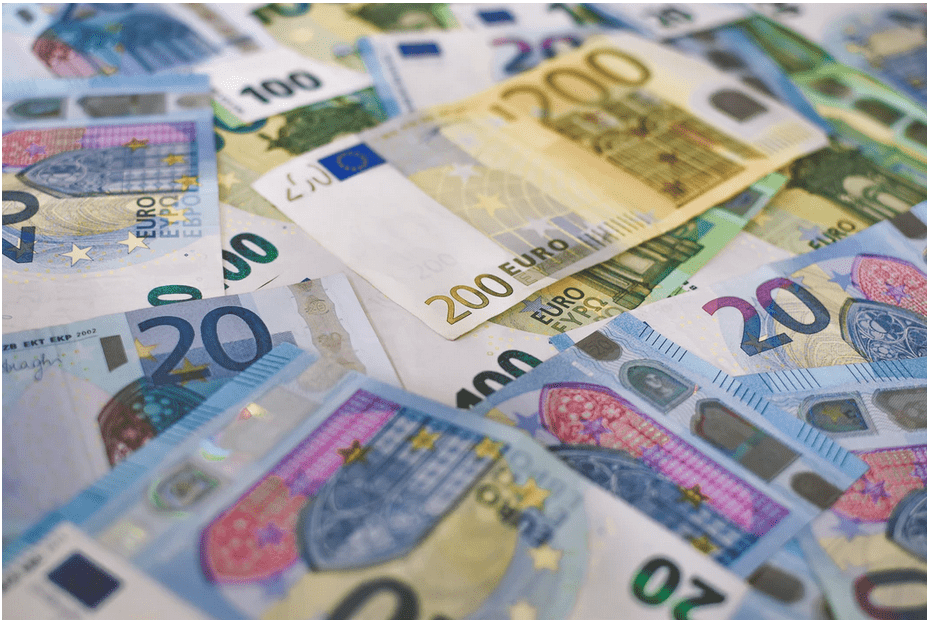Financial markets are turning their attention to the US dollar, as the global reserve currency continues to recover the lost ground since the pandemic has begun. Two of the most popular currency pairs – EURUSD and GBPUSD, are thus negatively affected, also due to the poorer economic prospects in the EU and the UK.
A few days ago, the US Dollar Index reached a new 2021 high, threatening to form a double bottom formation, which could send the price even higher over the upcoming months. With that being the case, the Euro and the Pound don’t seem to be in a favorable condition, as long as the narrative won’t change.
EURUSD Outlook
In the case of EURUSD, the price broke below a major triangle formation and the March 2021 lows, showing market participants are still favoring the US dollar. Better economic prospects and expectations for a sooner monetary policy normalization are among the most important factors.
Source: https://unsplash.com/photos/3ijHgGTSDi8
Free Reports:
 Get our Weekly Commitment of Traders Reports - See where the biggest traders (Hedge Funds and Commercial Hedgers) are positioned in the futures markets on a weekly basis.
Get our Weekly Commitment of Traders Reports - See where the biggest traders (Hedge Funds and Commercial Hedgers) are positioned in the futures markets on a weekly basis.
 Download Our Metatrader 4 Indicators – Put Our Free MetaTrader 4 Custom Indicators on your charts when you join our Weekly Newsletter
Download Our Metatrader 4 Indicators – Put Our Free MetaTrader 4 Custom Indicators on your charts when you join our Weekly Newsletter
Now that the currency pair made a new lower low for this year, the technicals shifted in favor of bears, putting the USD in advantage. The ECB will have to keep the printing press rumbling, given the EU economy is expected to reach pre-pandemic levels in 2023, lagging behind the US by a large.
Considering favorable technicals and fundamentals for the dollar, analysts expect the EURUSD to weaken towards the 1.15 area or even 1.10 in case monetary policy divergence will widen.
GBPUSD Outlook
On the same note, GBPUSD bullish developments ended in late February, given buyers were no longer able to push the currency pair towards new yearly highs. Retail traders using a forex app would have probably noticed that 1.42 is now a key resistance area that could not be breached on several occasions.
Alongside the poorer economic prospects, the UK economy has been rattled by a new surge in COVID-19 cases. The country was forced to keep restrictions in place for an extended period, on the back of the more contagious delta variant.
“Cable” stalled before reaching the April 2018 high around 1.43, suggesting that is a key area defended by sellers. The outlook remains grim, especially as the focus continues to be on the US dollar.
How much can the US Dollar rise?
A stronger USD can have a deflationary impact, tempering the rise in prices, but also threaten the global economic recovery and impact corporate profits. Although FX market participants are focused on the “stronger dollar” it might not take long until the US shifts back to monetary easing.
High debt-to-GDP levels around the world don’t cope well with rising currencies. There is a limit on how much the dollar can rise and once that will be reached, flows will move towards safe-haven assets, signaling the need for a new round of accommodation.
For the time being, that is not the case and as time goes by, both EURUSD and GBPUSD are expected to remain pressured. The main takeaway now is how fast the FED will proceed to policy normalization.
By Taylor Wilman

- COT Bonds Charts: Speculator Weekly Changes led by 5-Year & 10-Year Bonds Apr 28, 2024
- COT Stock Market Charts: Speculator Bets led by VIX & Russell-Mini Apr 28, 2024
- COT Soft Commodities Charts: Speculator Bets led by Corn & Soybean Meal Apr 28, 2024
- Today, investors’ focus is on the PCE Price Index inflation report Apr 26, 2024
- Gold price recovers amid uncertain US economic outlook Apr 26, 2024
- This “Bullish Buzz” Reaches Highest Level in 53 Years Apr 26, 2024
- FastSpring and EBANX Forge Partnership to Expand Pix Payments for Digital Products in Brazil Apr 25, 2024
- Target Thursdays: NAS100, Robusta Coffee, USDCHF Apr 25, 2024
- QCOM wants to create competition in the AI chip market. Hong Kong index hits five-month high Apr 25, 2024
- Japanese yen hits all-time low as BoJ meeting commences Apr 25, 2024

